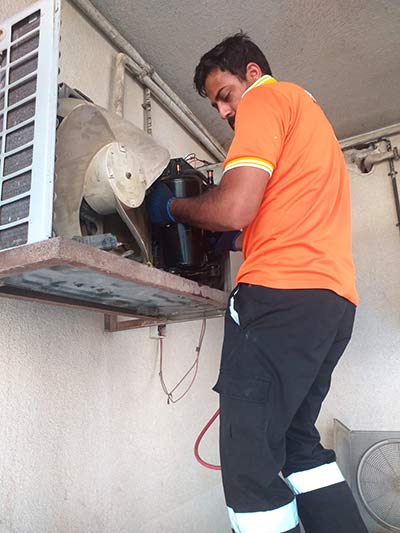
When your air conditioner malfunctions, it can be a source of frustration and discomfort, especially during the hot summer months. While some air conditioner repairs require the expertise of a professional HVAC technician, there are a few troubleshooting steps you can take before calling for help. In this article, we will provide some DIY air conditioner repair tips recommended by the best AC repair service Dubai to help you identify and potentially resolve common issues.
Check the power:
If your air conditioner is not turning on at all, start by checking the power source. Ensure that the unit is properly plugged in and that the circuit breaker hasn’t tripped. If the breaker has tripped, flip it back to the “on” position. If the unit still doesn’t turn on, there may be a more significant issue, and it’s best to contact a professional technician.
Clean or replace the air filter:
A dirty or clogged air filter can restrict airflow and reduce the efficiency of your air conditioner. Start by locating the air filter, usually found near the return air duct or air handler unit. Remove the filter and check its condition. If it’s dirty or clogged, clean it if it’s reusable or replace it with a new one. Cleaning or replacing the air filter regularly can help improve the performance and energy efficiency of your air conditioner.
Clear the condensate drain:
If you notice water pooling around your air conditioner or excessive humidity indoors, it could be due to a clogged condensate drain. Locate the drain line, typically near the indoor air handler or furnace, and inspect it for any blockages. You can use a wet-dry vacuum or a thin brush to clear the debris from the drain line. Additionally, you can mix a solution of water and bleach and pour it down the drain to prevent future clogs.
Inspect and clean the outdoor unit:
The outdoor unit of your air conditioner is exposed to the elements, and debris like leaves, dirt, or grass clippings can accumulate on its surface and restrict airflow. Inspect the unit and remove any visible debris using a brush or a gentle stream of water from a hose. Take care not to damage any delicate components. Keep the area around the unit clear of tall grass, plants, or obstructions to ensure proper airflow.
